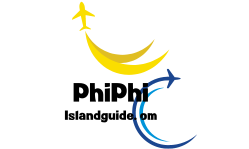Phi Phi Island, located in the Andaman Sea, is one of Thailand’s most famous island destinations. Known for its crystal-clear waters, vibrant marine life, and stunning landscapes, Phi Phi Island also faces environmental challenges due to tourism and other human activities.
If you’re passionate about marine conservation and want to make a positive impact while exploring this beautiful region, a volunteer trip to Phi Phi Island’s Marine Protected Areas (MPAs) could be the perfect choice for you.
This unique experience allows you to contribute to the preservation of marine ecosystems while enjoying the natural beauty of the island.
Introduction to Phi Phi Island and Marine Protected Areas
Phi Phi Island is part of a group of islands that belong to Thailand’s Krabi Province. The island is renowned for its white sandy beaches, towering limestone cliffs, and coral reefs teeming with marine life. However, the area’s popularity has led to environmental degradation, making it essential to protect its natural habitats. Marine Protected Areas (MPAs) around Phi Phi Island are designated zones where human activities are regulated to conserve marine biodiversity and ecosystems.
Volunteering in these MPAs offers a chance to directly engage in conservation efforts while immersing yourself in the island’s breathtaking surroundings. You’ll work alongside local organizations and environmental experts, participating in various activities aimed at preserving the island’s marine resources.
Types of Volunteer Activities
- Coral Reef Restoration: Coral reefs are vital to marine life, but they are under threat due to climate change, pollution, and overfishing. As a volunteer, you may assist in coral planting, monitoring reef health, and removing debris from the ocean. These efforts help to rehabilitate damaged coral ecosystems and promote the growth of new coral formations.
- Marine Species Monitoring: Volunteers may participate in monitoring programs that track the health and populations of various marine species, such as sea turtles, sharks, and fish. Data collected from these activities help researchers and conservationists understand the state of marine life and develop strategies to protect endangered species.
- Beach Cleanups: One of the simplest yet most impactful ways to contribute to conservation is by joining beach cleanups. Volunteers help remove plastic waste, fishing nets, and other debris that wash up on the shores, preventing them from entering the ocean and harming marine animals.
- Environmental Education: Raising awareness is a crucial aspect of conservation. As a volunteer, you may have the opportunity to engage with local communities and tourists, educating them about sustainable practices and the importance of protecting the marine environment.
- Waste Management Projects: Many MPAs focus on improving waste management practices to reduce pollution. Volunteers may help implement recycling programs, create educational campaigns about plastic waste, or assist in constructing eco-friendly waste disposal systems.
Benefits of Volunteering in Marine Protected Areas
Volunteering in a Marine Protected Area offers numerous benefits, both for the environment and for you as a volunteer:
- Environmental Impact: Your work directly contributes to the preservation of marine ecosystems, ensuring that future generations can enjoy the same beauty and biodiversity that exists today.
- Personal Growth: Volunteering allows you to develop new skills, gain a deeper understanding of marine conservation, and build meaningful connections with like-minded individuals from around the world.
- Cultural Exchange: You’ll have the chance to engage with local communities, learning about their way of life and the challenges they face in balancing tourism with environmental preservation.
- Exploration and Adventure: While you’re volunteering, you’ll also have the opportunity to explore Phi Phi Island and its surrounding waters, from snorkeling in coral reefs to hiking up to breathtaking viewpoints.
How to Join a Volunteer Program
To participate in a volunteer program in Phi Phi Island’s MPAs, you’ll need to find a reputable organization that offers such opportunities. Many conservation groups and eco-tourism companies provide structured volunteer programs that include accommodation, meals, and training. Some things to consider when choosing a program include:
- Duration: Programs can range from a week to several months, so choose one that fits your schedule and commitment level.
- Cost: While some programs are free or low-cost, others may require a fee to cover living expenses and conservation efforts.
- Activities: Look for programs that align with your interests, whether you’re passionate about coral restoration, species monitoring, or environmental education.
Conclusion
A volunteer trip to Phi Phi Island’s Marine Protected Areas is more than just a travel experience—it’s an opportunity to make a real difference in preserving one of the world’s most beautiful and biodiverse marine environments.
By participating in conservation efforts, you’ll not only help protect marine life but also gain valuable knowledge and unforgettable memories. Whether you’re planting corals, cleaning beaches, or educating others, your contribution will have a lasting impact on the health of our oceans.
